Magnet fishing, a hobby that merges the excitement of treasure hunting with the tranquility of fishing, is gaining popularity across the globe. It’s a pursuit that often yields intriguing finds, from ancient relics to modern discards. But among the most thrilling discoveries are precious metals such as gold and silver. Though not typically magnetic, these cherished metals can sometimes be found while magnet fishing, often encased in other magnetic materials or linked with magnetic debris. So, how can you increase your chances of discovering these valuable metals? Let’s dive in!
Understanding Magnet Fishing
Before we embark on the fascinating journey of magnet fishing for gold and silver, it’s crucial to have a comprehensive understanding of the sport itself. Magnet fishing, also known as magnetic fishing, is an exhilarating activity that perfectly blends the thrill of treasure hunting with the peaceful serenity of fishing. This popular pastime involves dipping a powerful magnet attached to a robust rope into water bodies with the intention of pulling out metallic objects that have been lost or discarded.
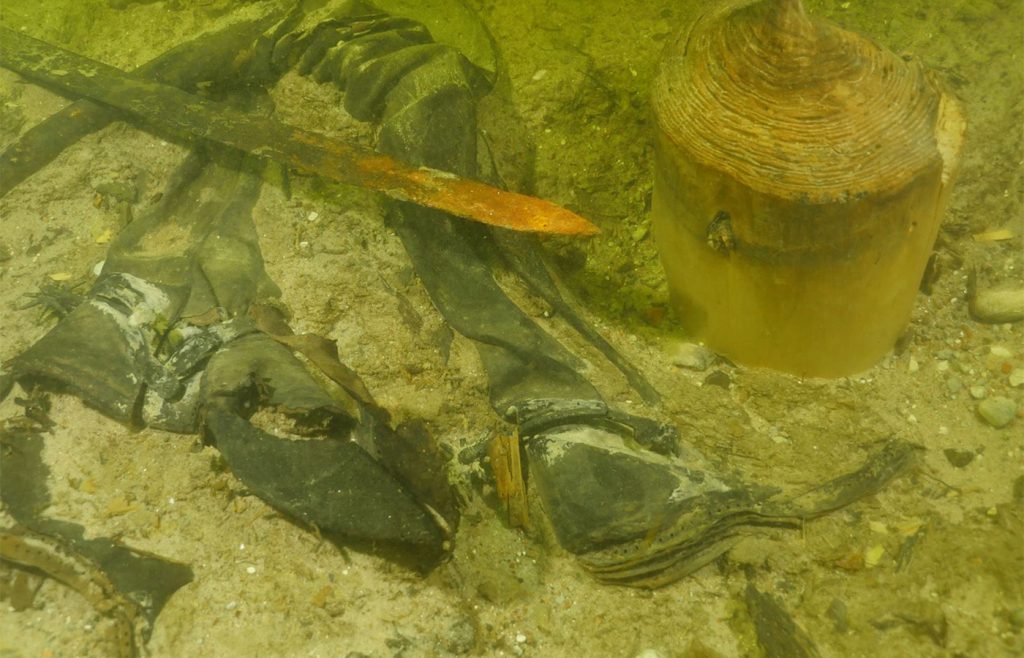
The cornerstone of this hobby lies in the use of potent magnets, often neodymium magnets, renowned for their exceptional magnetic pull. These extraordinarily strong magnets are capable of attracting ferromagnetic materials, which are metals attracted to magnetic fields. The list of ferromagnetic materials includes common metals such as iron, nickel, cobalt, and certain types of steel. This powerful attraction allows magnet fishers to pull various metallic items from the depths, uncovering hidden treasures and forgotten relics.
However, it’s important to note that not all metals are created equal in the eyes of a magnet. Precious metals like pure gold and silver are not ferromagnetic, meaning they don’t have an inherent attraction to magnets. This might initially seem discouraging to those dreaming of discovering these valuable metals during their magnet fishing adventures. But this fact shouldn’t dissuade you from your quest for these precious finds.
Despite gold and silver’s non-magnetic nature, they are often found in combination with other materials that do exhibit magnetic properties. For instance, many jewelry pieces made from gold or silver often contain other metals for added strength and durability, some of which are magnetic. Similarly, these precious metals can be found attached to magnetic items, such as a gold necklace tangled with a steel fishing hook, or a silver coin trapped within a rusted tin can.
The intricacies of magnet fishing extend beyond the types of metals you can attract. Understanding the environmental and geographical factors, the varied equipment used in magnet fishing, and the techniques to maximize your chances of a successful haul are all integral parts of this engrossing hobby.
One of the compelling aspects of magnet fishing is the unpredictability and excitement that comes with each cast. Every time the magnet plunges into the water, the anticipation builds. What will it attract this time? An ancient artifact, a piece of a bygone era, or perhaps a sparkling hint of gold or silver mixed with the mundane? This suspense is what keeps magnet fishers constantly intrigued and continuously casting their magnets into the depths.
In conclusion, magnet fishing offers an open door to anyone with a magnet, a rope, and a spirit of adventure. Whether it’s the joy of exploring your local waterways, the thrill of uncovering hidden treasures, or the hope of finding valuable gold and silver, magnet fishing is a hobby that promises an exciting experience every time. So go ahead, gear up, and cast your magnet. The waters are full of hidden mysteries, just waiting for you to discover.
Tips for Finding Gold and Silver
While the thrill of magnet fishing lies in its unpredictability, there are strategies to increase your chances of finding gold and silver. Here are some tips and tricks to guide you on your quest for precious metals.
Location is Key
The first and perhaps most crucial step in any magnet fishing expedition, especially when your goal is to uncover precious metals like gold and silver, is choosing the right location. Just as in real estate, location is everything in magnet fishing. The spots you decide to explore can significantly influence the type and quantity of items you’re likely to discover.
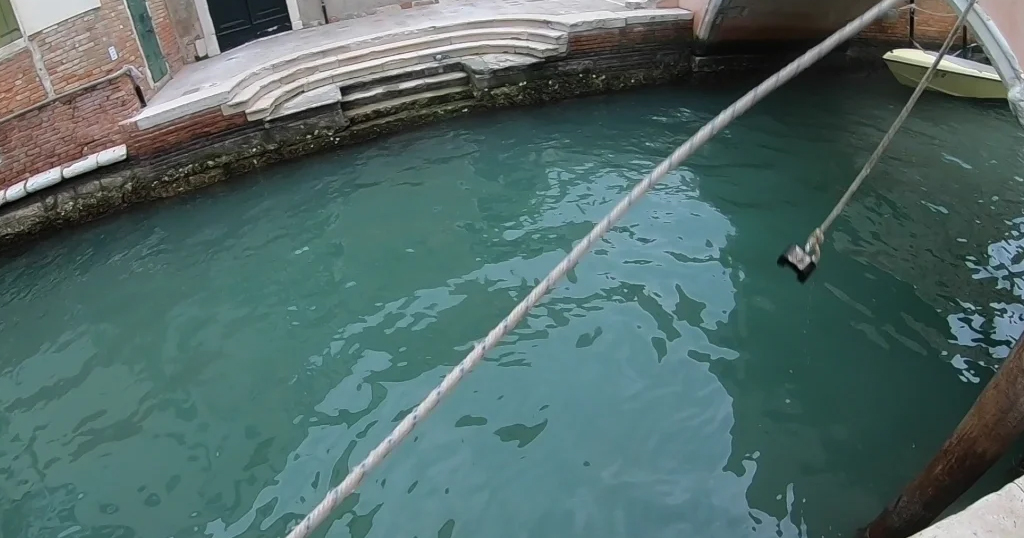
High-traffic areas are often a magnet fisher’s paradise. These can include popular fishing spots, bustling marinas, frequently visited piers, and well-loved swimming holes. These locations are frequented by large numbers of people, and as a result, have a higher probability of lost or discarded items. Think about it: how many times have people accidentally dropped their jewelry while fishing, or lost a precious trinket while taking a dip in the local swimming hole? These incidents transform these areas into treasure troves for magnet fishers.
Another rich source of potential finds is locations with historical significance. Old trading routes, former ferry crossings, and sites of historical battles often hide relics of the past. Not only do these locations offer a higher chance of finding interesting artifacts, but they might also hold items made from gold or silver. Coins, jewelry, and other precious items from bygone eras often end up in water bodies, waiting for a magnet fisher to unearth them.
When magnet fishing for gold and silver, it’s important to remember that these metals were traditionally viewed as symbols of wealth and status. As such, areas that were affluent in the past, or places where wealthy individuals would have spent time, could yield promising results. For instance, water bodies near old estates or manor houses could be worth exploring.
Additionally, it’s worth considering areas where events or activities might lead to the loss of gold or silver items. Near bridges, for instance, where people might toss coins for luck or as part of a local tradition, could prove fruitful. Similarly, water bodies near popular paths or trails, where people might sit to rest and inadvertently lose items out of their pockets, can also be good magnet fishing spots.
Understanding the history and usage of a location can provide valuable clues about what you might find. Researching local archives, historical maps, or even talking to long-time residents can uncover potential magnet fishing spots that others may overlook.
Remember, the goal is not just to find any metallic object, but specifically gold and silver. While these precious metals might not be the most common finds, they are certainly possible to discover, especially if you’ve chosen your location wisely.
In conclusion, taking the time to carefully select your magnet fishing location can significantly increase your chances of striking gold – both figuratively and literally. So arm yourself with knowledge, pack up your magnet fishing gear, and set off on your next treasure hunting adventure.
Using the Right Equipment
Just as a carpenter needs the right tools to craft a masterpiece, a magnet fisher requires the right equipment to unearth hidden treasures. When the goal is finding precious metals like gold and silver, having the right magnet fishing gear becomes even more crucial. The right tools will not only enhance your magnet fishing experience but also increase the chances of making valuable finds.
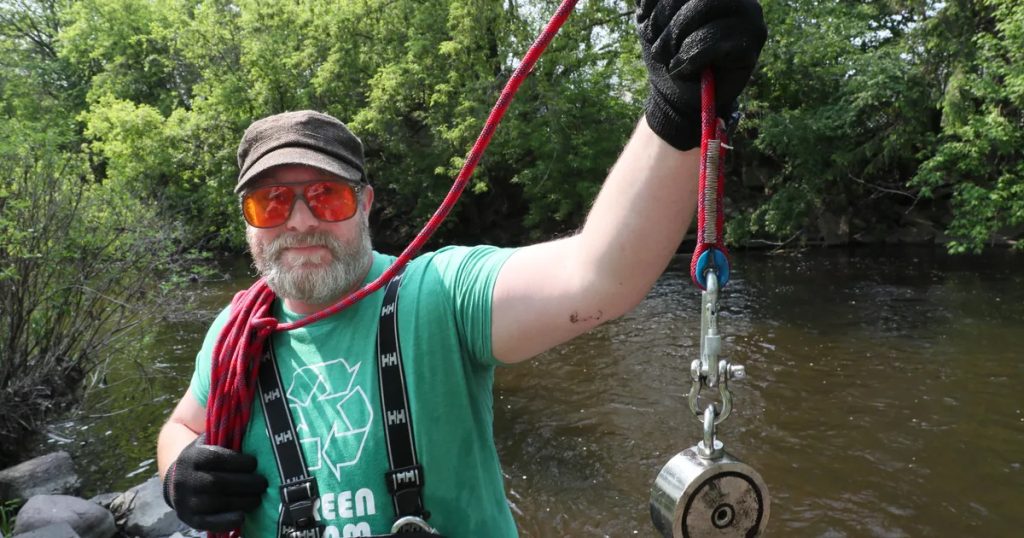
One of the foundational pieces of equipment in magnet fishing is, unsurprisingly, the magnet. But not just any magnet will do. High-strength neodymium magnets, known for their powerful magnetic pull, are a popular choice among magnet fishers. These magnets, often referred to as rare-earth magnets, have the strength and durability necessary to attract and lift heavy metallic objects from the depths of water bodies.
The strength of your magnet is measured in pull force, which essentially represents the maximum weight the magnet can hold under ideal conditions. Magnets with a high pull force are capable of retrieving heavier finds and penetrating deeper into silt and mud to latch onto buried items. This power is particularly beneficial when you’re hoping to find gold or silver, as these precious metals might be part of larger, heavier finds or attached to other magnetic materials.
In addition to a high-strength magnet, a sturdy rope is another essential piece of magnet fishing gear. The rope needs to be strong enough to support the weight of your magnet plus any potential finds, and long enough to reach the bottom of your chosen fishing spot. A good magnet fishing rope should be durable, resistant to abrasion, and able to withstand prolonged exposure to water without weakening or rotting.
One piece of equipment often overlooked but incredibly useful in magnet fishing is the grappling hook. A grappling hook can be an invaluable tool for dislodging items that are stuck in the mud or tangled in underwater debris. Additionally, it can aid in retrieving non-ferrous items that your magnet can’t pick up, such as gold or silver pieces trapped in areas your magnet can’t reach.
A magnet fishing rig incorporating both a magnet and a grappling hook offers the best of both worlds. You can use the magnet to attract and retrieve magnetic objects, and the grappling hook to snag, hook, and pull out non-magnetic or stubborn finds.
Gloves are another key piece of equipment. They not only protect your hands from potential cuts or abrasions when pulling in the rope but also keep your hands clean when handling finds that may be covered in mud or algae.
Remember, magnet fishing for gold and silver involves more than just throwing a magnet into a body of water. It requires the right equipment, strategic planning, and a keen understanding of your environment. With a high-strength magnet, sturdy rope, handy grappling hook, and a good pair of gloves, you’ll be well-equipped to embark on your magnet fishing adventure and increase your chances of unearthing precious metals.
Patience and Persistence
Like any other hobby that involves exploration and discovery, magnet fishing requires a significant dose of patience and persistence. These two qualities are especially crucial when your ultimate goal is to unearth precious metals such as gold and silver.
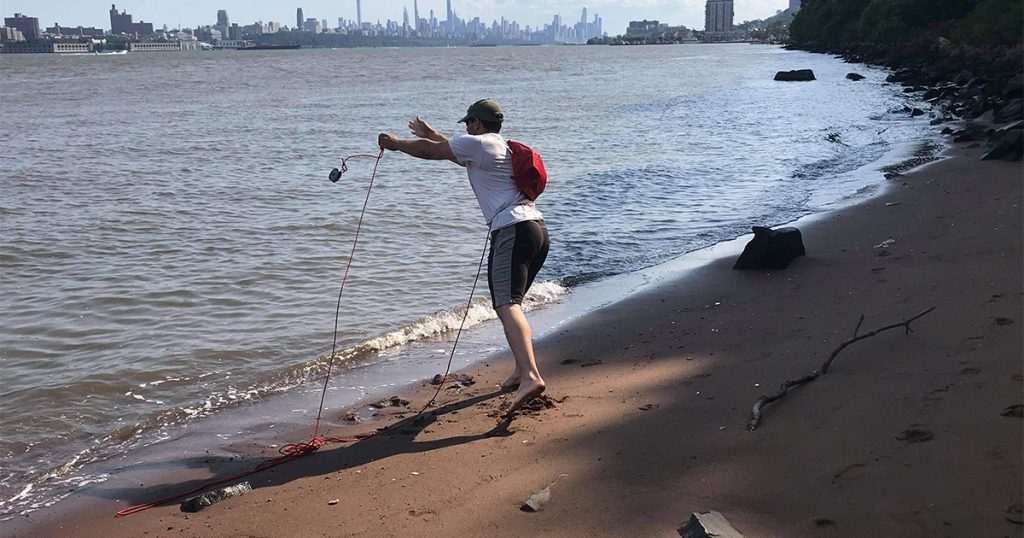
Patience in magnet fishing extends beyond merely waiting for the magnet to attach to something in the water. It involves understanding that not every cast will yield treasure, and that’s perfectly okay. The beauty of magnet fishing lies in the mystery and anticipation of the unknown. Each cast is a roll of the dice, a new chance for discovery. While you might pull up an old bicycle part one moment, the next could reveal a piece of gold jewelry or a silver coin. The variability is what makes magnet fishing so enthralling.
Patience also comes into play when determining the best time to fish. Just like traditional fishing, magnet fishing can often be a waiting game. The right find might not come in the first hour, or even the first day. But the more time you invest, the higher your chances of making a significant discovery.
Persistence is the other side of the magnet fishing coin. This isn’t just a one-off activity where you try once and give up if you don’t find gold or silver immediately. Magnet fishing is an ongoing endeavor, a continuous exploration of what lies beneath the water’s surface. One day might bring a haul of common coins or discarded tools, but the next day could surprise you with a precious metal find.
Persisting in your magnet fishing efforts means continually learning and adapting. It could mean trying different locations or adjusting your fishing technique. Maybe a particular spot didn’t yield results today, but what about trying at a different time? Or perhaps using a stronger magnet or a different piece of equipment like a grappling hook might make the difference.
Persistence also means not letting a few unsuccessful attempts dampen your spirits. Remember, even the most seasoned magnet fishers don’t find treasure every time. But they keep going, keep casting, and keep exploring because they understand that each throw of the magnet brings a new opportunity.
In the world of magnet fishing for gold and silver, patience and persistence are the keys to unlocking potential treasures. Each cast is a new adventure, and every find, whether it’s a rusty nail or a silver coin, is a part of the story. So, gear up, keep those spirits high, and remember that the adventure is in the journey, not just the destination. You never know what the next cast might bring.
Cleaning and Identifying Finds
One of the most rewarding aspects of magnet fishing is the moment you reel in your find and begin the process of discovery. This moment often involves cleaning and identifying your treasures, which can be an exciting challenge, especially when you’re on the hunt for gold and silver.
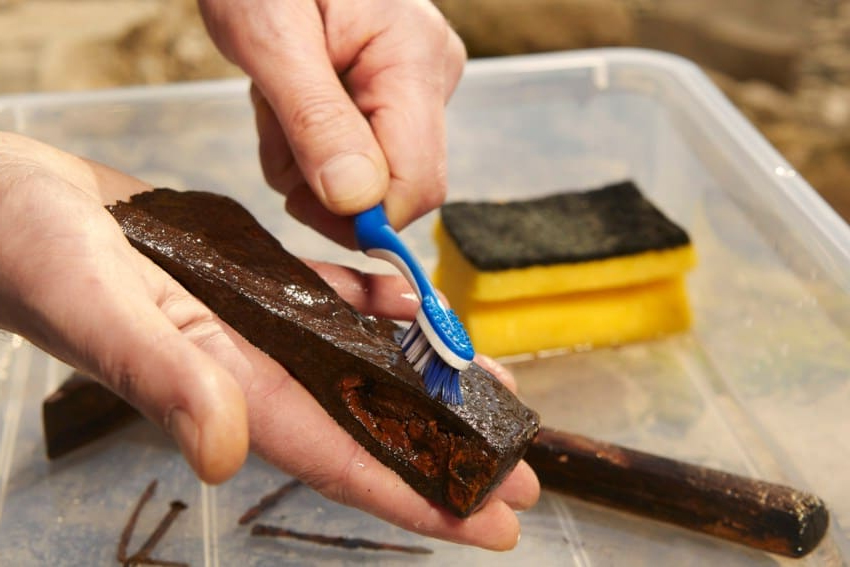
Cleaning your magnet fishing finds is an important step that often reveals the true nature of the item you’ve pulled from the water. Precious metals like gold and silver can be encrusted with dirt, algae, or rust from other ferrous objects, obscuring their true identity. A careful cleaning process can help uncover these hidden treasures.
To clean your finds, start with a soft brush and warm soapy water. This gentle method can remove a significant amount of dirt and grime without damaging the item. Remember to be gentle, especially if you suspect the item might be valuable or delicate.
For stubborn dirt or encrustations, a toothpick or a soft dental pick can be helpful. These tools allow you to delicately pick away at the dirt without scratching or damaging the metal underneath. Always proceed with caution, and if the dirt is too stubborn, consider seeking professional cleaning assistance.
Once your finds are cleaned, the next challenge is identification. When it comes to determining whether you’ve found gold or silver, there are a few key characteristics to look out for.
Gold is a dense metal, much heavier than most other substances of the same size. It’s also non-magnetic, so it won’t stick to your magnet on its own. However, it may still be retrieved if it’s part of a larger item that contains ferromagnetic materials. Gold retains its luster, even after being submerged for long periods, so a shiny, yellow metal could be a good sign.
Silver, on the other hand, is also non-magnetic but tends to tarnish when exposed to air and water over time. This tarnish often appears black or dark grey. If you find an item that looks silver underneath a layer of tarnish, you might have a piece of real silver on your hands.
Professional testing kits are available for accurate identification of gold and silver. These kits often involve applying a small drop of acid to a scratch on the item and observing the reaction. However, these tests should be used sparingly and as a last resort, as they often require scratching or filing a small part of the item, which could potentially devalue it.
In conclusion, cleaning and identifying your magnet fishing finds is an integral part of the adventure when searching for gold and silver. The process requires a gentle hand, a keen eye, and a touch of knowledge about the properties of these precious metals. With patience and care, you can uncover and confirm your hidden treasures, adding another layer of excitement to your magnet fishing journey.
Magnet fishing is far more than just a treasure hunt; it’s a journey of discovery, an exploration of the unknown, and a connection to history that lies hidden beneath the water’s surface. While it’s unlikely that this hobby will transform you into a millionaire overnight, the genuine thrill of finding something – especially something as precious as gold or silver – makes it an incredibly rewarding and exciting pursuit.
In essence, magnet fishing for gold and silver is about embracing the journey as much as it is about the destination. It’s about savoring the anticipation of the throw, the excitement of the find, and the joy of discovery. So, arm yourself with the right tools, foster patience and persistence, and immerse yourself in the thrilling world of magnet fishing. Who knows? The next cast might just bring in a gleaming piece of precious metal that was waiting for you to discover it. Happy magnet fishing!

